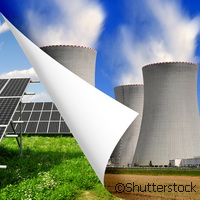Advances in renewable energy
In recent years, the scope of renewable energy has gone beyond solar and wind power to encompass a myriad of sub-topics. To reflect this diversity, 23 innovative renewable energy demonstration projects in 16 EU Member States have been awarded EUR 1.2 billion. The projects cover areas such as advanced biofuels, concentrated solar power and geothermal power, wind power, ocean energy and distributed renewable management (smart grids). With 50 % of funding coming from one of the world¿s largest funding programmes for demonstrations of CCS and innovative renewable energy technologies, NER300, it is hoped these projects will support the EU¿s aims of generating 20 % of energy from renewable sources by 2020. The NER300 programme acts as a vehicle for demonstrating environmentally safe carbon capture and storage (CCS) and innovative renewable energy sources (RESs) technologies at a pre-commercial scale within the European Union. By devising novel ways to create more renewable energy, the EU hopes to cut greenhouse gas emissions and become less dependent on imported energy. Furthermore, boosting the renewables industry, technological innovation and employment in Europe will spur further growth in these sectors. One of the projects is a biofuel-to-liquid (BtL) plant in northern Finland, called Bioenergy Ajos BtL. Biodiesel and bionaphta will be produced in the Baltic Sea area for sale to a market primarily of diesel and petrol retailers. The plant is expected to use 950,000 tonnes per year (t/y) of woody feedstock and 31,000 t/y of tall oil to deliver an annual output of 115,000 t/y of biofuel. The innovative project will include biomass pretreatment, a gasification island and gas-to-liquid conversion. Another project, the Sweden Bioenergy Pyrogrot, will be using forest residues as feedstock, which will produce 160,000 tonnes a year of pyrolysis oil with the energy content estimated at about 750 GWh. The plant will operate at an input processing capacity of 720 tonnes a day of dry biomass. Collectively, the 23 projects will have an impact on many levels, from development through to the final stage when they are up and running. Collectively they will increase annual renewable energy production in Europe by some 10 TWh, the equivalent of the annual fuel consumption of more than a million passenger cars. It will also demonstrate technologies that will subsequently help scale up production substantially from renewable sources across the EU. Thousands of jobs will also be created as a result of the projects. Firstly, the construction phase will call for employment of several thousand full-time workers over a three-to-four-year period. Secondly, once the projects are operational, around a thousand full-time workers will be employed for the next 15 to 20 years to keep the installations running. The projects will be co-financed with revenues obtained from the sale of 200 million emission allowances from the New Entrants' Reserve (NER) of the EU Emissions Trading System.For more information, please visit: European Commission - NER300 http://ec.europa.eu/clima/news/articles/news_2012121801_en.htm(opens in new window) European Commission - Renewable Energy http://ec.europa.eu/energy/renewables/index_fr.htm(opens in new window)



